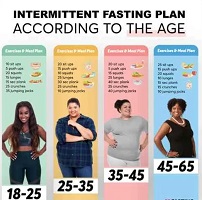Vitamin D Deficiency: Symptoms, Causes, and Treatments
Vitamin D Deficiency: Symptoms, Causes, and Treatments
Symptoms, Causes, and Treatments of Vitamin D Deficiency

Vitamin D deficiency can cause bone density loss, which can lead to osteoporosis and fractures (broken bones).
Severe vitamin D deficiency can also induce other disorders, such as rickets in youngsters. Rickets is an uncommon condition in which the bones soften and bend.
Overview
There has recently been disagreement regarding how much vitamin D humans need to keep healthy—and how to know if we get enough of it—and the answer is tricky.
However, researchers believe that vitamin D is essential for human health. We may not be able to maintain adequate levels of vitamin D if we do not get enough natural sunlight or eat vitamin D-rich foods.
This is a problem since a lack of vitamin D can be detrimental to bones and muscles.
Vitamin D insufficiency affects people throughout their lives. Breastfed newborns do not obtain enough vitamin D from their mothers’ milk and must take supplements.
As people get older, it becomes more difficult for their skin to produce appropriate amounts of vitamin D, which can lead to a shortage.
The actual prevalence of vitamin D deficiency is determined by what is deemed a suitable level of vitamin D in the blood to sustain musculoskeletal health.
The Institute of Medicine has determined that a 25-hydroxyvitamin D level of 20-50 ng/mL will allow for this. This set of principles is congruent with the dominant viewpoint in Europe.
Professional groups in the United States, however, believe that a level of at least 30 ng/ml is essential for good bone health.
“Regardless of what level your doctor determines to be vitamin D deficiency, treatment and prevention of vitamin D deficiency are simple, relatively inexpensive, and safe.”
When 25-hydroxyvitamin D levels approach 50 ng/mL, we do not believe there is any meaningful advantage.”
What is vitamin D deficiency?
A vitamin D deficit occurs when your body does not have enough vitamin D. It is mostly responsible for problems with your bones and muscles.
Vitamin D is a nutrient that your body requires for normal bone development and preservation. The Vitamin D is also important for the neurological system, musculoskeletal system, and immune system.
Vitamin D can be obtained in a variety of ways, including:
- Sun exposure on your skin (those with darker skin and the elderly may not get enough vitamin D from sunlight, and your geographical location may also impede appropriate vitamin D exposure from sunlight).
- Through the food you consume.
- We are using nutritional supplements.
Despite all of these strategies for getting vitamin D, vitamin D insufficiency is a worldwide issue.
What are the signs and symptoms of a vitamin D deficiency?
Rickets are caused by a severe deficiency of vitamin D in youngsters. Rickets symptoms include:
- Improper growth patterns are caused by bowed or bent bones.
- Muscle wasting.
- Bone ache.
- Joint deformities.
This is unusual. Mild vitamin insufficiency in children may result in weak, sore, and/or painful muscles.
In adults, vitamin D deficiency is less noticeable. Among the signs and symptoms could be:
- Tiredness.
- Bone ache.
- Muscle weakness, pains, or cramps.
- Mood swings, such as depression.
However, you do not have any indications or symptoms of vitamin D insufficiency.
What causes a lack of vitamin D?
The two most common causes of vitamin D insufficiency are:
- Not obtaining enough vitamin D from your diet or sunlight.
- Your body isn’t absorbing or utilizing vitamin D effectively.
Vitamin D insufficiency can be caused by a variety of factors, including:
- Certain medical conditions.
- Weight loss-surgeries.
- Certain medications.
Several biological and environmental factors, such as age and the quantity of melanin (pigment) in your skin, might also increase your chance of having vitamin D deficiency.
Why is vitamin D so important?
Vitamin D is one of many vitamins that your body requires to function properly.
It is essential for maintaining the calcium balance in your blood and bones, as well as for bone growth and maintenance.
You need vitamin D specifically so that your body can utilize calcium and phosphorus to create bones and sustain healthy tissues.
When you have chronic and/or severe vitamin D insufficiency, your intestines absorb less calcium and phosphorus, resulting in hypocalcemia (low calcium levels in your blood).
This results in secondary hyperparathyroidism (overactive parathyroid glands seeking to maintain normal blood calcium levels).
If severe, both hypocalcemia and hyperparathyroidism can induce symptoms such as muscle weakness and cramps, weariness, and depression.
To balance calcium levels in your blood (via secondary hyperparathyroidism), your body draws calcium from your bones, resulting in rapid bone demineralization (when a bone breaks down faster than it can be rebuilt).
This can lead to osteomalacia (soft bone disease) in adults and rickets in children.
Osteomalacia and osteoporosis increase your risk of bone fractures. Rickets is a kind of osteomalacia that only affects youngsters. Demineralization produces bowed or bent bones in children because their bones are still forming.

Who is affected by vitamin D deficiency?
Vitamin D insufficiency can affect anyone, including newborns, children, and adults. It may be more common in those with darker complexion and who wear garments with significant skin coverage, particularly in Middle Eastern nations.
Vitamin D insufficiency is a worldwide problem. Around 1 billion people worldwide are vitamin D deficient, and 50% are vitamin D deficient.
In the United States, approximately 35% of adults are vitamin D deficient.
Vitamin D Deficiency Tests
The 25-hydroxy vitamin D blood test is the most accurate approach to determine how much vitamin D is in your body.
For healthy persons, a level of 20 nanograms/milliliter to 50 ng/mL is considered appropriate. Vitamin D insufficiency is indicated by a level less than 12 ng/mL.
How is vitamin D insufficiency treated?
Supplements are typically used to address vitamin D insufficiency.
If a healthcare expert discovers that you have a deficiency, they may suggest the following treatments.
Supplements
Vitamin D insufficiency is typically treated with oral supplements. You can get these over the counter, but you should consult a doctor for dose advice.
Magnesium aids in the activation of vitamin D, so you may wish to supplement with this mineral as well.
A doctor may recommend prescription vitamin D for severe deficiency, which comes in significantly higher doses of up to 50,000 IU. Vitamin D injections may also be recommended by your doctor.
Food Sources
Consuming additional vitamin D-rich foods may also help. Options include (3Reliable Sources):
- Fatty Fish
- Egg Yolks
- Beef Liver
- Fortified Cereals
- Fortified Milk and Juices
- Yogurt
Because sunlight is a natural source of vitamin D, your doctor may also advise you to spend more time outside.
However, considering the detrimental consequences of excessive UV exposure, it is critical to take precautions such as limiting your overall time in the sun and using sunscreen.
Summary
Vitamin D insufficiency is typically treated with supplements, food sources, and moderate sun exposure.
What does vitamin D deficiency mean?
A vitamin D deficit occurs when your body does not acquire enough vitamin D to keep healthy.
Why do I need vitamin D, and how do I get it?
Vitamin D aids calcium absorption in the body. Calcium is one of the primary components of bone. Vitamin D is also important for your nervous, muscular, and immune systems.
Vitamin D can be obtained in three ways: through the skin, through the diet, and supplementation.
After being exposed to sunlight, your body naturally produces vitamin D. However, excessive sun exposure can cause skin aging and skin cancer, therefore many individuals seek vitamin D from alternative sources.
What amount of vitamin D do I require?
The amount of vitamin D you require each day is determined by your age. In international units (IU), the recommended amounts are:
- 400 IU from birth to 12 months
- Children aged 1 to 13 years: 600 IU
- Teens aged 14 to 18: 600 IU
- Adults aged 19 to 70: 600 IU
- Adults aged 71 and up: 800 IU
- Women who are pregnant or breastfeeding: 600 IU
People who are at high risk of vitamin D deficiency may require more. Consult your doctor to determine how much you require.
What causes a lack of vitamin D?
Vitamin D deficiency can occur for a variety of causes, including:
- You do not consume enough vitamin D.
- You do not absorb enough vitamin D from food (this is known as malabsorption).
- You do not get adequate solar exposure.
- Your liver and kidneys are unable to convert vitamin D to its active form in the body.
- You use medications that impair your body’s capacity to convert or absorb vitamin D.
Who is vulnerable (at risk) to vitamin D deficiency?
Some persons are more vulnerable to vitamin D insufficiency than others:
- Breastfed infants, because human milk is low in vitamin D. If you are breastfeeding, give your baby a 400 IU vitamin D supplement every day.
- Older folks, because your skin does not produce vitamin D as efficiently as it did when you were younger, and your kidneys are less able to convert vitamin D to its active form.
- People with dark skin, have a lower ability to generate vitamin D from sunlight.
- People with disorders that make nutrient absorption difficult, such as Crohn’s disease, ulcerative colitis, and celiac disease.
- Obese people, because their body fat binds to some vitamin D and inhibits it from entering the bloodstream.
- People who have had gastric bypass surgery, a form of weight loss operation in which a portion of the small intestine is bypassed. Because vitamin D is absorbed there, avoiding some of it makes it more difficult to absorb enough vitamin D.
- People suffering from chronic kidney or liver disease might impair their capacity to convert vitamin D into a form that their body can use.
- People who use medications that reduce vitamin D levels, such as cholesterol, anti-seizure, steroid, and weight-loss medications.
If you think you could be deficient in vitamin D, go to your doctor. A blood test can determine how much vitamin D is in your body.
What are the side effects of vitamin D deficiency?
Vitamin D insufficiency can cause bone density loss, which can lead to osteoporosis and fractures (broken bones).
Severe vitamin D deficiency can also result in the following diseases:
- It can cause rickets in children. Rickets is an uncommon condition in which the bones soften and bend. African-American newborns and children are more likely to get rickets.
- Severe vitamin D deficiency causes osteomalacia in adults. Osteomalacia is characterized by weak bones, bone pain, and muscle weakness.
How can I increase my vitamin D intake?
Natural sources of vitamin D include the following foods:
- Fatty fish like salmon, tuna, and mackerel
- Liver of beef
- Cheddar
- Wild mushrooms
- Egg yolks
Vitamin D can also be obtained from fortified foods. You can examine food labels to see if a food contains vitamin D. The following foods are frequently fortified with vitamin D:
- Milk
- Cereals for breakfast
- Fresh orange juice
- Yogurt and other dairy products
- Soy beverages
Many multivitamins contain vitamin D. There are also vitamin D supplements for babies, both in pill form and as a liquid.
The treatment for vitamin D deficiency is to take supplements. Consult your provider about how much you should take, how often you should take it, and how long you should take it.
Can too much vitamin D be harmful?
Too much vitamin D (known as vitamin D toxicity) can be dangerous. Toxic symptoms include nausea and vomiting, a loss of appetite, constipation, weakness, and weight loss.
Extremely high doses of vitamin D can harm the kidneys. It also elevates the calcium level in your blood. Hypercalcemia (high blood calcium levels) can induce disorientation, renal failure, and irregular heartbeat (arrhythmia).
The majority of occurrences of vitamin D poisoning occur when people take too many vitamin D tablets. Sun exposure cannot provide an excessive amount of vitamin D because the skin controls the amount of vitamin D produced.

FAQs
What are the best vitamin D dietary sources?
Food is a good source of vitamin D.
Vitamin D-rich foods include the following:
- Oily fish such as salmon, trout, tuna, and mackerel
- Canned seafood, such as herring and sardines
- Egg whites
- Egg yolks
- Beef liver
5 foods fortified with vitamin D:
- Cereals for breakfast
- Milk
- Milk made from almonds
- Milk made from soy
- Fresh orange juice
Because there aren’t many naturally occurring vitamin D foods, many goods are vitamin D-enriched. Check the nutrition label to ensure that vitamin D has been included.
Make time every day to enjoy the sun. If you don’t have any courses, employment, or other commitments that need you to go outside for the day, take a few minutes to walk around your residence hall or the block.
Even on overcast, dreary days, remember to apply sunscreen.
What are the health benefits of vitamin D?
Vitamin D is essential for numerous biological activities.
- Strong bones
- Immune system function
What are the fourteen symptoms of vitamin D deficiency?
If they exist, the indicators are usually subtle, however, some people may notice:
- Having more diseases or infections.
- Tiredness or tiredness.
- Loss of hair.
- Muscle ache.
- Backache in the lower back.
- Suffering from depression or a bad mood.
- Wounds that heal slowly as a result of surgery, infection, or damage.
How can I quickly boost my vitamin D levels?
- Spend time in the sun. Vitamin D is commonly referred to as “the sunshine vitamin” because sunlight is one of the best sources of this nutrient.
- Eat fatty fish and seafood.
- Consume more mushrooms.
- Incorporate egg yolks into your diet.
- Consume fortified foods.
- Consider taking a multivitamin.
- Consider using a UV lamp.
How do you get enough vitamin D?
Many breakfast cereals, as well as some brands of orange juice, yogurt, margarine, and other dietary products, include vitamin D.
Fish liver oils and fatty fish (such as trout, salmon, tuna, and mackerel) are excellent natural sources of vitamin D. Vitamin D is found in modest levels in beef liver, egg yolks, and cheese.
What fruit has the most vitamin D?
- Oranges. Oranges are high in vitamin D because their juice is fortified with calcium and vitamin D.
- Eggs. When eaten whole, eggs are also a good source of vitamin D.
- Salmon. Fish oils are a good source of vitamin D and omega-3 fatty acids.
- Milk.
- Cod Liver Oil
- Raw Oysters.
- Spinach.
- Banana.
How long should you spend in the sun to get vitamin D?
The researchers considered the amount of clothing as well as the season of the year.
In the spring and summer, 25% of the body (the hands, face, neck, and arms) is exposed to the sun, and 8 to 10 minutes of sun exposure at noon generates the appropriate amount of vitamin D.
Can a deficiency in vitamin D create headaches?
Vitamin D insufficiency has been linked to headaches because it can impact inflammation and the function of your neurons.
Supplements, vitamin D-rich foods, and sunlight can all help you boost your vitamin D levels. Taking vitamins can help you minimize the frequency of your headaches.
Is vitamin D from the sun?
Vitamin D is a sunlight vitamin that has been generated on Earth for over 500 million years. When exposed to sunshine, 7-dehydrocholesterol in the skin absorbs UV B radiation and converts to previtamin D3, which isomerizes to vitamin D3.
When is the best time to get some vitamin D from the sun?
between 10 a.m. to 3 p.m.
The optimum time to soak up the sun to gain the most vitamin D is between 10 a.m. and 3 p.m. The UVB rays are intense at this time, and it is also stated that the body is more efficient in producing vitamin D at this time.
How can I get more vitamin D naturally?
The flesh of fatty fish and fish liver oils are the finest sources. Egg yolks, cheese, and beef liver all contain trace quantities.
Certain mushrooms contain vitamin D2; additionally, some commercially sold mushrooms contain increased levels of D2 as a result of being purposely exposed to high levels of ultraviolet radiation.
What foods contain vitamin D? foods for vitamin D?
Oily fish, such as salmon, mackerel, and sardines, are excellent sources of vitamin D. Egg yolks, red meat, and liver are other good sources.
Some foods, such as breakfast cereals, plant milks, and fat spreads, also contain vitamin D. Check the on-pack information to see if this applies to the products you purchase.
Why is only the morning sun good for vitamin D?
However, early morning and early evening light only supply UVA radiation (which is beneficial for producing nitric oxide) and not UVB sunshine, which is required for vitamin D production.
While it is crucial to avoid sunburn, totally avoiding midday sun prevents us from reaping the full benefits of sun exposure.
Symptoms of long-term vitamin D deficiency
Patients with severe vitamin D insufficiency may have secondary hyperparathyroidism symptoms such as bone pain, arthralgias, myalgias, weariness, muscular twitching (fasciculations), and weakness.
Symptoms of severe vitamin D insufficiency
Symptoms when vitamin D is low
- Tiredness.
- Inability to sleep well.
- Aching or soreness in the bones.
- Feelings of sadness or depression.
- Loss of hair.
- Muscle wasting.
- Appetite loss.
- Being prone to illness.
Deficiency of vitamin D and neurological symptoms
Neurodegenerative illnesses such as multiple sclerosis, Alzheimer’s disease, Parkinson’s disease, and neurocognitive impairments may be exacerbated by low levels of this vitamin. Vitamin D has also been related to depression in studies.
How long does it take to recover from a lack of vitamin D?
How Long Does Vitamin D Deficiency Take to Recover? Once you begin taking supplements, it may take a few weeks for your vitamin D levels to rise.
If you don’t have any underlying health conditions that could slow down the recovery process, you can expect a 4–6-week recovery time.
What foods contain the most vitamin D? Vitamin D-rich foods
The flesh of fatty fish and fish liver oils are the finest sources. Egg yolks, cheese, and beef liver all contain trace quantities.
Certain mushrooms contain vitamin D2; additionally, some commercially sold mushrooms contain increased levels of D2 as a result of being purposely exposed to high levels of ultraviolet radiation.


